Uber’s meteoric rise to dominate the personal transport market has made it one of the most successful – and the most hated – companies in history. Along with its controversial CEO Travis Kalanick, it has developed a reputation as being iron-fisted, cruel and relentless in its pursuit of power. Inspiring an equal measure of admiration and loathing, Uber has turned the traditional taxi industry on its head – and provided consumers with a more user friendly way of getting from Point A to point B.
Genesis
In the mid-1990’s, with the world Wide Web still in its infancy, the undergraduate Computer Science Association or USCA at UCLA University in sunny California was a breeding ground for future millionaires. The association was more of a clubhouse where like-minded students could relax after class while they played games and talked computers. Though not a founding member, a young San Fernando Valley resident by the name of Travis Kalanick soon become a central figure of this group. Kalanick was pursuing a double major in computers and business.
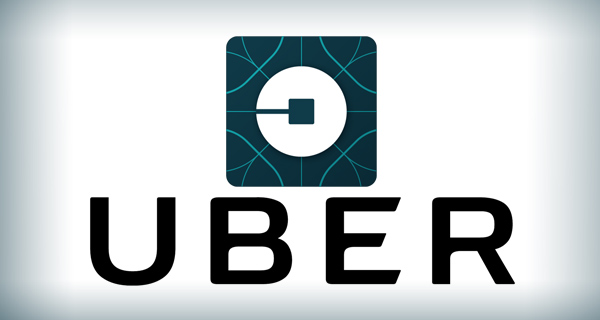
Despite the boom in Internet companies up north in Silicon Valley, the USCA was mostly about fun and games. Soon, however its members stumbled upon an opportunity. Because there were no firewalls back then, it was possible to search for files on all connected computers and then index the results. The group decided to replicate the time honored practice of college kids lending out their record albums. But they were able to extend the lending fraternity to anybody who was connected to the internet. The idea was molded into a start up which they named Scour. It was a tool that would scrub a network’s files looking for MP3s.
Travis Kalanick was not involved in the founding of Scour because he was doing an internship with Intel. But as Scour became established and grew in popularity, he jumped on board. He was in charge of marketing and fund-raising.
It was in this role that Kalanick developed the on the job training that would serve him in later years. Living at his parents’ house he would spend up to 8 hours a day on the phone, wheeling and dealing to attract investors. In 1999, his efforts paid off when Hollywood power player Michael Ovitz poured $4 million into Scour in return for a 51% share in the company.
Within a year, however, the writing was on the wall for Scour. It’s success had attracted a competitor who would do things better – Napster. Scour’s fundamental problem was that it didn’t scale. The site would often crash through overuse, and Scour was running out of fresh content.
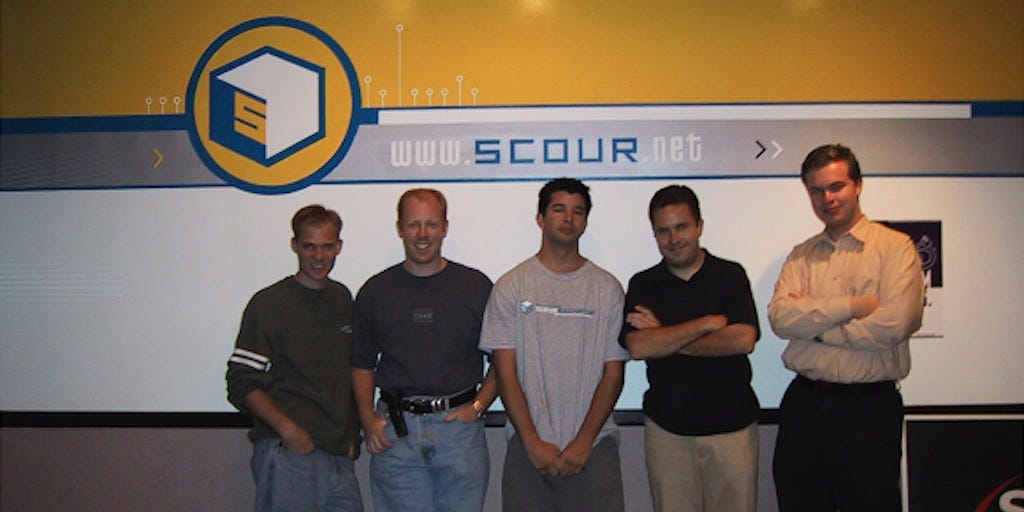
Meanwhile Napster was paying close attention to Scour’s problems. They introduced a tweak whereby listening to a song would automatically make it available to others. As a result Napster quickly became a viral sensation. Scour tried to gain ground by moving into sharing movie files, but ultimately they were doomed. They company went into bankruptcy in 2000.
Red Swoosh
By the end of that year, with Scour gone, twenty-four year old Travis Kalanick, had no college degree and no job. He needed a new plan – and he needed it fast.
Within weeks of the folding of Scour, Kalanick was onto his next project. He teamed with former Scour partner Michael Todd to form Red Swoosh, which was essentially Scour recreated for business customers. This new startup would allow companies to use the Internet to share similarly large files with their customers. Enabling large file movement was already big business, but Red Swoosh’s competitive advantage was that it capitalized on the asset light strategy to keep its costs below that of competitors. Red Swoosh pushed and pulled files from personal computers owned by others, foreshadowing what Uber would later do in connecting riders with drivers whose cars represented ‘massive unused capital’ on city streets.
As CEO of Red Swoosh, Kalanick’s job was to pitch to potential clients. As he had done at Scour, he set a frenetic work pace, proving to be the quintessential workaholic. Despite his gargantuan efforts, however, Red Swoosh, became a victim of the peaking of the Internet bubble. Investments dried up and tensions rose. Kalanick blamed Todd for mismanagement and wrangled for him to be kicked out of the company.
Kalanick kept wheeling and it looked as if he had found a savior. On September 11th, 2001 he was scheduled to meet with a potential partner investor named Danny Lewin. Lewin, however, was on board American Airlines Flight 11 from Boston to Los Angeles, which crashed into the north tower of the World Trade Center. It is thought that he was the first to die, after confronting the hijackers.
By the end of 2001, Red Swoosh was out of money. Reprieve came in the form of a father and son team who had made a fortune from a semiconductor business – James and Jared Chao. They agreed to pour $300,000 into the business in return for a 30% stake. Over the next few years, Red Swoosh stumbled along, propped up by further investment. Then, in April 2007, major competitor Akamai purchased the company, hiring the handful of employees of the company, including Kalanick.
Kalanick was now 31 years old. For his share in the sale of Red Swoosh he had pocketed around $3 million. Yet, he was now tied to a large corporation as an employee – something he had never experienced before. Over the next year he worked to continue building the Red Swoosh brand. At the same time he re-styled himself as an ‘angel investor’ for young entrepreneurs. He bought an old house in the Castro, an old San Francisco neighborhood and named it the ‘Jam Pad.’ The house became a meeting place for this with fresh tech based ideas and no money. Kalanick revelled in the role of wiser, older sage who had been there and done that. His blog, which he called Swooshing, became essential reading. In it he described his home, the Jam Pad as ‘ a place where entrepreneurs regularly come to hang out, to rap on ideas, to jam with other entrepreneurs, to play Wii Tennis and Gears of War and to have fantastic healthy gourmet meals made by the Jam Pad’s in-house chef.’

Kalanick quit Red Swoosh in late 2008. He spent the next couple of years biding his time as he examined new business ventures. He also threw himself into leisure activities. He became a part of a group called the Random Travellers Society. They would randomly spin a globe to decide where in the world they would travel.
In 2010, Kalanick got heavily involved with a Q and A website called Formspring. He invested in the company, but was soon running the show. At the same time, he was still looking out for other opportunities. He was introduced to a smartphone app started by an old friend named Garrett Camp. The app was called UberCab and it allowed the user to make quick contact with a limousine in the San Francisco area.
Kalanick began sharing his time between Formspring and UberCab. Within a few months it became obvious that he had to choose between them. The people at Formspring were pushing him to become their CEO, but in late September, 2010 he walked into a board meeting and declared, “I’m going to be Uber.”
Uber Begins
In the Summer of 2008, Garrett Camp, a mild mannered Canadian software designer was waiting for a cab in San Francisco’s bay area. He’d been waiting nearly thirty minutes for a cab that had promised to be there in fifteen. When he saw an empty cab from a competitor company come by he hailed it and got in. A few minutes later, though, he got a call from the original taxi company asking where he was. He replied that they were late so he’d gotten in another cab.
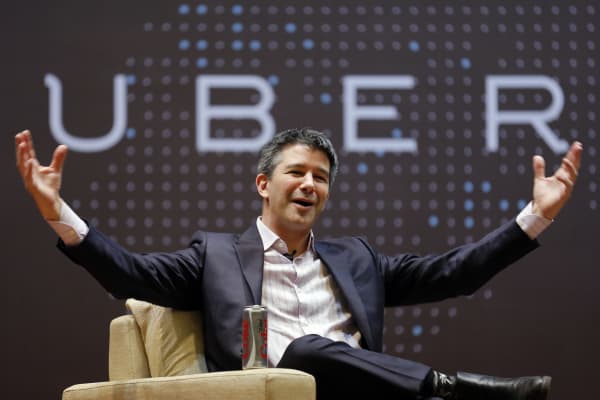
This became a regular occurrence for Camp. Eventually both taxi companies that he dealt with, Luxor and Yellow, blacklisted him. This annoyed the young Canadian, who just happened to have $75 million in his bank account after selling his first start-up, StumbleUpon.
Hailing a cab was now more difficult for Camp. The taxi switchboard companies would cut him off as soon as they saw his number. One evening, while standing on a street corner and running late for a date, he had the proverbial light bulb moment. He had his brand new Apple iPhone in his hand. That iPhone was GPS enabled. Why couldn’t he request a cab directly from his phone, simply by pushing a button that says ‘Pick Me Up’? This way you cut out the dispatcher completely.
Camp also knew that the iPhone included a thing called an accelerometer. This would allow for the tracking of not just where a car was but how fast it was moving. With this technology, a map could be generated that showed the beginning and end of the trip, along with its duration and price. It would also link the rider with the driver – cutting out the middleman.
On August 8th, 2008 Camp paid $35 to reserve the website, www.ubercab.com. He then began to elicit feedback about his idea from his circle of entrepreneurial friends. He also interviewed taxi drivers, who complained about the hours they were sitting idly waiting for a fare. Slowly other people began jumping on board. One of them was Travis Kalanick. In early 2009, Travis contributed an idea that became pivotal to the future Uber model. Rather than buying a fleet of vehicles, which Camp was envisioning, Kalanick told him that he didn’t need to buy cars – just give the app to drivers and let then be free agents. They would work when they wanted to work. The focus for both men was on limousine rides, rather than normal taxi cab rides.
Kalanick signed on as an adviser to Uber, with a 10% stake in the company. It took over a year to develop the app. By January, 2010 Camp and Kalanick began testing the service. They also began making plans to launch operations in San Francisco.
Kalanick hired a 27-year-old General Electric middle management employee named Ryan Graves to oversee the San Francisco launch. Graves began visiting garages to sign up limo drivers. The service launched in late May, 2010 with just a handful of drivers and customers. The initial customer base came from Twitter followers who had been keeping tabs on what the entrepreneurs were up to.
Kalanick and Graves who, had been made CEO, began working together to find investors. After receiving a lot of knockbacks, the seed funding round raised $1.25 million.
It was at this point that Kalanick decided to go full time with UberCab. But he wasn’t content to play second fiddle to a guy that he had hired. He orchestrated a demotion for Graves and claimed the title of CEO for himself. He also demanded that his shareholding rise from 10% to 23%.

On the very day that Kalanick became CEO, the company received a cease and desist letter from the San Francisco Metro Transit Authority and California Public Utilities Commission. It stated that the name ‘UberCab’ meant that they were a taxicab company and under the authority’s direction.
Kalanick solved the problem in 5 seconds. He changed the name from UberCab to simply Uber. At the time of his taking over, the operation was tiny – and it made plenty of mistakes. On Halloween of 2010, they offered a discount to riders. This created such a huge demand, on their already busiest day yet, that it left a lot of people unable to get a ride. Despite this, growth was steady throughout 2010. Then, over the 2011 New Year period it absolutely blew up.
Word of mouth was responsible for the exponential growth in Uber’s customer base. But finding Limo drivers was a different story. They didn’t have the same social media habits as the young about towner’s in need of a limo ride. Only licensed drivers were eligible to drive for Uber. They all had customers of their own and none of them were prepared to go exclusive with Uber.
Uber began giving away iPhones preloaded with the Uber app to drivers. This enabled them to increase their driver supply to keep up with the ever growing demand in San Francisco.
Having proven the model in Frisco, Kalanick started to replicate it in other cities. Under the guidance of head of operations, Ryan Graves, they turned their attention on Seattle, Chicago, Boston, and Washington, D.C. In each city, Graves made connections in the tech world fist. This created buzz and attracted cutting edge users. Once the word was being generated, they began looking for drivers and working through government regulations.
As they moved from city to city, the Uber team began refining their playbook, refining the system and making it more efficient. The process became (1) establish buzz in the tech community (2) assess regulations (3) recruit drivers (4) develop pricing (5) woo local media, and (6) capitalize with social media buzz.
In the early days, Kalanick was a master at local public relations. Promotion would start with a blog post, in which he would relate how much he loved the city they were moving into. He would highlight its key attributes and then talked about how much greater the city would be when Uber had introduced their service.

By 2011, the job of securing investment was much easier. In February Benchmark Capital poured $10 million into the company. At this point Uber was valued at $60 million. The company had nine thousand customers and $1.8 million in net revenue. It was estimated that it would get to $100 million gross revenue within a year. It achieved that goal in six months.
Enemies Emerge
As Uber sprang up in more and more cities across America, it began to receive push-back. The sixth city that they went into was Washington, D.C. Before they could get off the ground, however, the city’s taxi commissioner announced that Uber was operating an illegal taxi operation. On Martin Luther King Day, 2011 the commissioner ordered an Uber which took him to a press conference at the Mayflower Hotel. He then proceeded to impound the driver’s car and issued a $20,000 ticket. But Uber didn’t back down. They assured all drivers that they would pay all of their fines and took the moral high ground in public, asserting that they were not a taxi company and, therefore, not subject to regulatory provisions.
In one city after another, taxi companies, the taxi commission and local and state agencies came at Uber to shut it down. Under the guidance of consultant Bradley Tusk, Uber fought back. They ran social media campaigns to stop the opposers, often meeting them in court. The public were overwhelmingly on the side of the company.
But there was one thing that Uber’s customers were not happy about. During busy periods, such as rush hour and bar closing times, it would apply ‘surge pricing’ with rates going up during these peak demand times. Surge pricing had the effect of encouraging more drivers to work and encouraging some customers to find a cheaper service. Both of these results eased demand on the service. But it also infuriated the customer base. Many of them blamed the unfairness of surge pricing at the foot of CEO Kalanick, who quickly became known as a cutthroat businessman who refused to listen to consumer sentiment.
By the end of 2012, Uber was operating in 27 locations. In that year they also introduced UberX, providing rides in hybrid cars. But it was also the year that Uber faced its first serious competition. It came in San Francisco from a young company called Lyft. Lyft was a ride sharing business whereby a person would slap a large pink mustache on the grill of their car and then pick up those who were in need of a ride for the shared cost of gas and a little extra donation. Usually this would work out to be less than a cab fare for the same distance. It used a smartphone app that was modeled off of the Uber app.
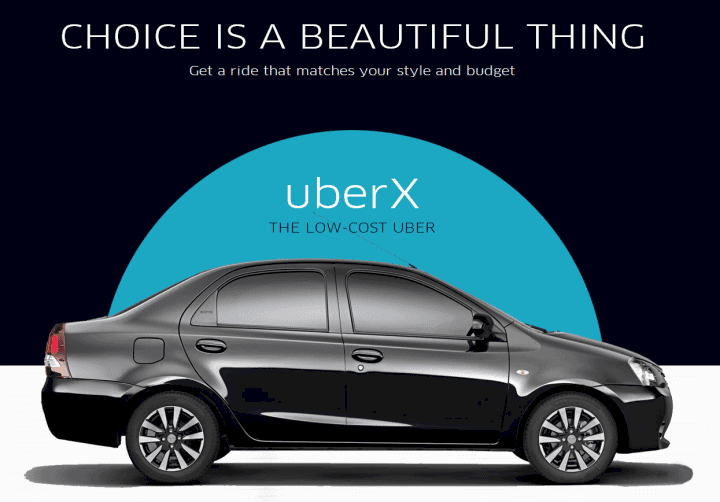
Lyft was a hit with young people, who preferred its friendlier, more laid back image. Riding in a limo was starting to look elitist. As a result, Uber set about restructuring its game plan. It would rebrand itself with a focus on getting a rider from Point A to Point as quickly and as inexpensively as possible.
UberX, which had started out as an eco-friendly alternative to a limo, became the means of beating traditional taxi services.
In early 2014, Kalanick hired former Amazon executive Jeff Holden as product development manager. Holdren identified two things he found lacking in the Uber system; the ability of the rider to communicate beforehand where he wanted to go and the driver’s ability to navigate there. He oversaw two new features to fix this – destination input by the rider and turn-by-turn navigation on the driver app.
Both features were a hit and by the end of 2014 Uber was operating in 262 markets worldwide.
Uber was by now a genuine phenomenon. But it was a phenomenon that had attracted a lot of enemies. A lot of that animosity was thanks to the brash nature of CEO Travis Kalanick. His outspokenness and inability to hold his tongue soon made him the offender in chief. Kalanick was the poster boy for political incorrectness, once stating that he could land women as quickly as a person could summon an Uber.
Kalanick’s divisive personality only underscored Uber’s growing reputation as a bully in the marketplace. Reports were publicized of some underhanded tactics used to undermine competitor Lyft. Publications began labeling Uber as an evil company and describing its CEO as an ‘Ayn Rand loving libertarian nut job.’ In some cities it become politically correct to avoid Uber all together.
Uber was in a strange position. Worldwide its business was growing from strength to strength. At the same time, however, its reputation was tanking. Things went from bad to abysmal when an Uber driver in Delhi was convicted of raping a passenger. Something had to be done – quick.
In early 2015, Uber brought in a new executive to oversee digital and physical safety, Joe Sullivan. He had a long to-do list, including stricter management of driver activity. Things were tightened up to the extent that Uber management can tell if a driver is holding his phone while driving or braking too hard or going too fast. During that year another new executive, Sally Kay set about taking and, and overcoming, a slew of local regulators who were intent on stopping Uber in its tracks.
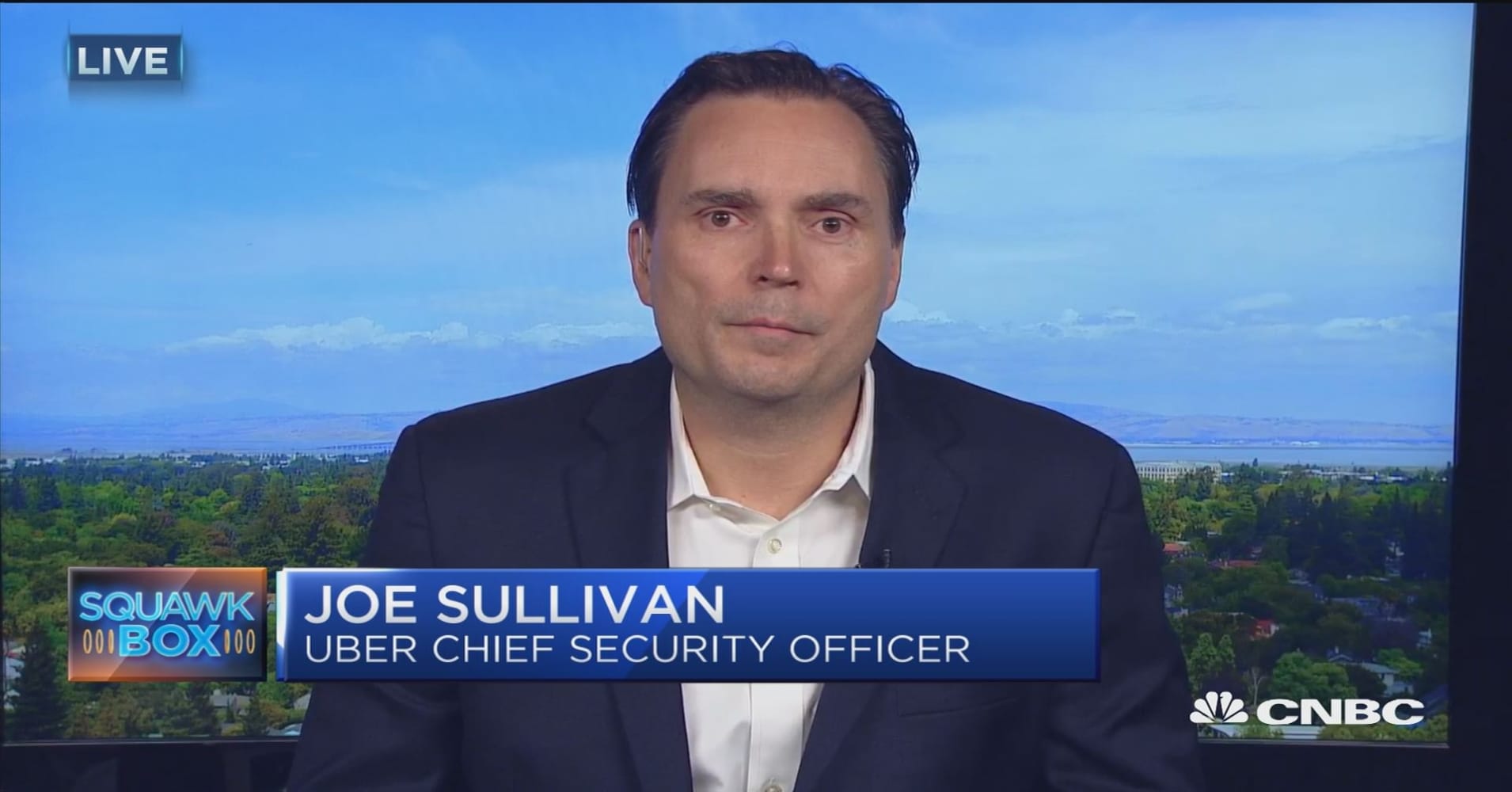
By the beginning of 2016, Uber was on a more even keel. Rather than lurching from one crisis to another. In an attempt to change its image, the company teamed with Mothers Against Drunk Driving to encourage young people to take an Uber rather than drink and drive. It also partnered with hospitals to make it cheaper for cancer patients to return home from treatment.
The Driverless Future
Travis Kalanick has been working on introducing driverless cars to the Uber mix since 2013. He loved the idea that it would no longer rely on that most uncontrollable of business variables – people. Autonomous vehicles would be far safer as robots are not subject to drowsiness or distraction. And robots would be cheaper than people.
But in 2013, the technology wasn’t yet ready. By February 2014, Uber was canvassing the world looking for top robotics talent. It purchased a Pittsburgh company called Carnegie Robotics, making it the kernel of its self-driving car team. Then, in December 2014, Uber hired 60 researchers from the National Robotics Engineering center.

After two years of development, Uber announced in August 2016, that its cars were ready for a limited showing. The cars worked but still required a human engineer behind a steering wheel should something go wrong.
Uber are still working on their driverless car. In that quest they are in a race with the likes of Google, Apple and Tesla, which is rumored to be considering its own ride sharing business. All of this competition will, ultimately, result in a better, cheaper service for those of us wanting to get from Point A to Point B as efficiently and cost effectively as possible.



